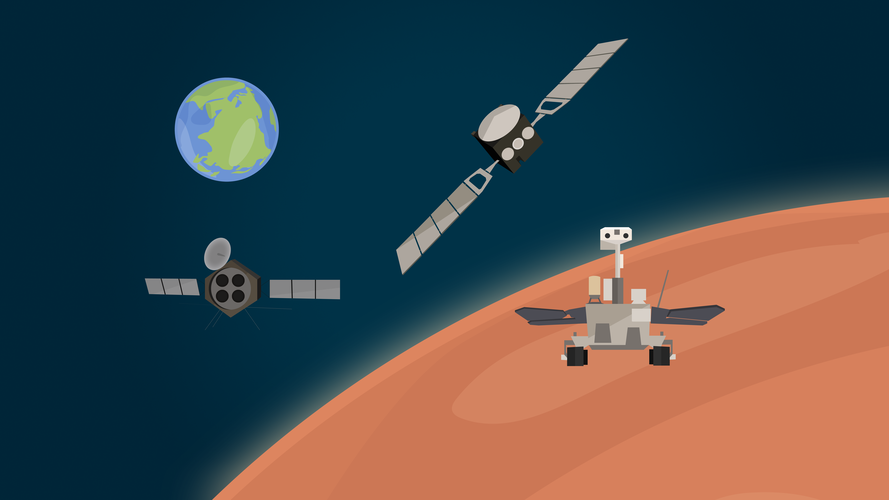12 things you never knew about Galileo satellites
Thursday, 02 December 2021 08:12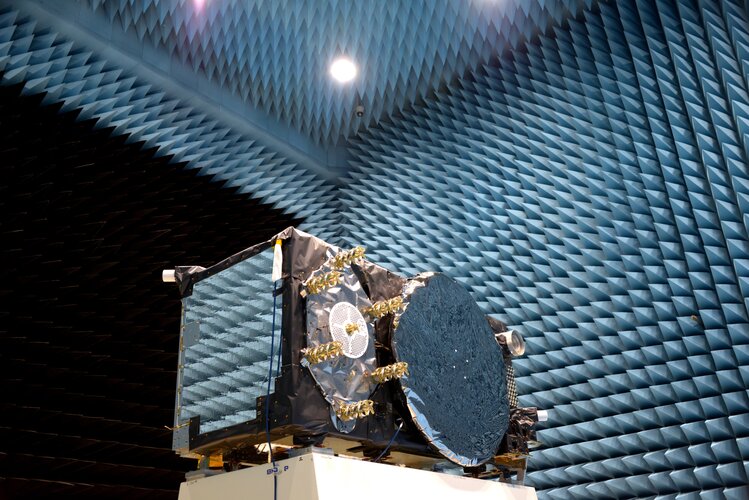
Europe’s Galileo satellite navigation system is providing the world’s most precise positioning services, but the satellites at its heart are surprisingly compact, and dependent on many different technologies to keep running. Here are 12 things you probably didn’t know about them:
Biden administration turns focus to space security
Wednesday, 01 December 2021 22:05
At the first meeting of the Biden administration’s National Space Council Dec. 1, Vice President Kamala Harris said a top concern is keeping space safe for military, civilian and commercial operations.
Kymeta plans to release OneWeb terminal by next summer
Wednesday, 01 December 2021 21:54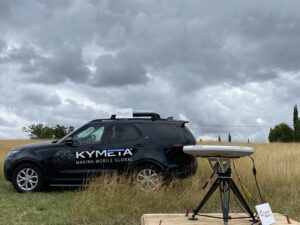
Antenna maker Kymeta announced a partnership Dec. 1 to jointly develop a flat panel, electronically steered user terminal for stationary land applications on OneWeb’s low Earth orbit broadband network.
Space Council condemns “irresponsible” Russian ASAT test
Wednesday, 01 December 2021 21:20
Administration officials used a National Space Council meeting to issue a new round of criticism of Russia’s antisatellite weapon test and call for a halt to future ASAT tests that create debris.
White House releases space priorities framework
Wednesday, 01 December 2021 15:00
WASHINGTON — The White House released Dec. 1 a document that outlines its space policy priorities, including addressing growing military threats and supporting “a rules-based international order for space.” The seven-page United States Space Priorities Framework document, released ahead of the first meeting by the National Space Council under the Biden administration, represents the first […]
Test tanks fuelled for ESA’s Themis reusable first stage
Wednesday, 01 December 2021 13:00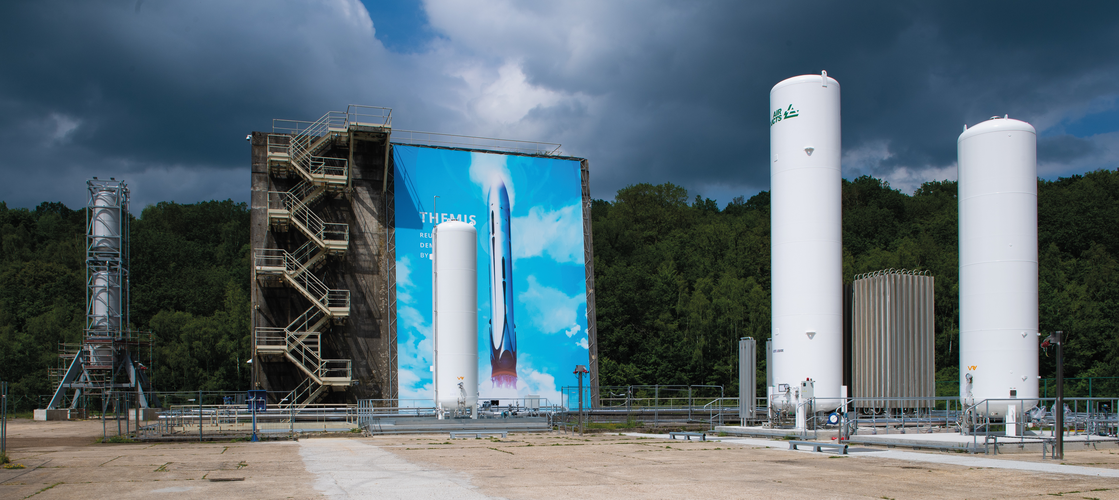
Recently completed tests of two propellant tanks set a first technological milestone in the ESA reusability roadmap towards the demonstration of a reusable first stage vehicle called Themis.
Soon, 1 out of every 15 points of light in the sky will be a satellite
Wednesday, 01 December 2021 11:28
I'm outside at my rural Saskatchewan farm, chatting with my neighbors who I've invited over to appreciate the night sky through my telescope. After exclamations and open-mouthed wonder over Saturn's rings, and light that has been traveling through space for more than two million years to reach our eyes from the Andromeda Galaxy, our conversation inevitably turns to the pandemic, our work-from-home arrangements and complaints about rural internet. My neighbor casually mentions they've just switched to using Starlink for their internet provider.
I glance up and notice a bright satellite moving across the sky, almost certainly a Starlink, since they now make up almost half of the nearly 4,000 operational satellites and they're extremely bright. I take a deep breath and carefully consider how to discuss the substantial cost that we're all going to have to pay for Starlink internet.
I don't blame my neighbors for switching.
SpaceX grapples with Raptor production problems
Wednesday, 01 December 2021 10:23
Problems increasing production of the Raptor engines that power SpaceX’s Starship vehicle have led to personnel shakeups at the company and a warning from founder Elon Musk that the company risked “bankruptcy” if the company could not resolve them.
NASA inspector general warns of space station gap
Wednesday, 01 December 2021 08:56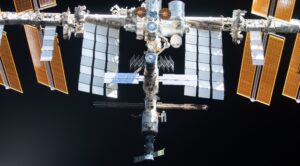
Concerns about the long-term viability of some existing International Space Station modules and the potential of delays in development of commercial space stations heighten the risk of a gap in low Earth orbit destinations, a new report warns.
Mike Griffin critical of U.S. response to China’s advances in hypersonic weapons
Tuesday, 30 November 2021 23:27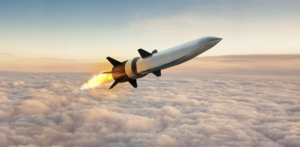
In the global race for geopolitical dominance, hypersonic glide weapons level the playing field “not by improving their own capabilities, but by removing ours,” said Mike Griffin.
Lightfoot to lead Lockheed Martin space unit
Tuesday, 30 November 2021 22:31
Lockheed Martin has named a former acting administrator of NASA as the new head of its space business unit.
Anuvu raises $50 million for small GEO mobility constellation
Tuesday, 30 November 2021 19:48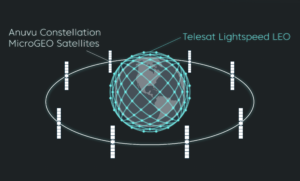
Investors that rescued Anuvu from bankruptcy in March have thrown $50 million behind plans for the mobile connectivity provider to have its own constellation of small geostationary-orbit (GEO) satellites.
NASA TV to Air IXPE Prelaunch Activities, Launch
Tuesday, 30 November 2021 19:24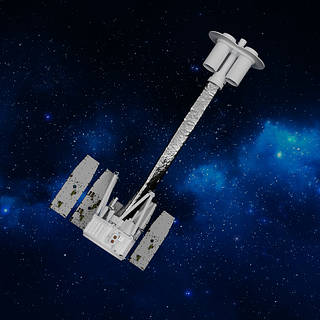 NASA will provide coverage of the upcoming prelaunch and launch activities for the Imaging X-ray Polarimetry Explorer (IXPE) mission, the first satellite dedicated to measuring the polarization of X-rays from a variety of cosmic sources, such as black holes and neutron stars.
NASA will provide coverage of the upcoming prelaunch and launch activities for the Imaging X-ray Polarimetry Explorer (IXPE) mission, the first satellite dedicated to measuring the polarization of X-rays from a variety of cosmic sources, such as black holes and neutron stars. Airbus Ventures leads Q-Ctrl’s $25 million quantum sensor funding round
Tuesday, 30 November 2021 18:09
Australian startup Q-Ctrl has raised $25 million to develop software for space-qualified quantum sensors in a funding round led by Airbus Ventures, the venture capital arm of European aerospace and defense giant Airbus.


